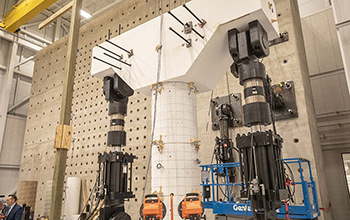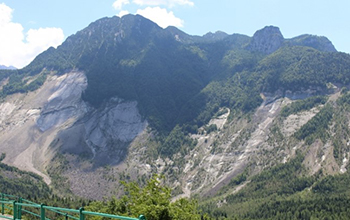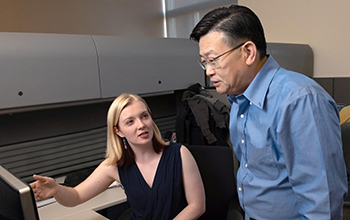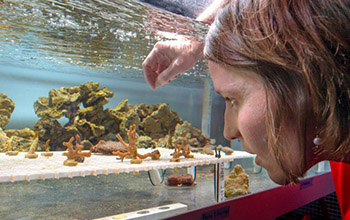
Research News
Hybrid sliding-rocking bridge columns are more earthquake-resistant
August 27, 2019
Bridges make travel faster and more convenient, but, in an earthquake, these structures are subject to forces that can cause extensive damage and make them unsafe.
Now civil and environmental engineer Petros Sideris of Texas A&M University is leading an NSF-funded research project to investigate the performance of hybrid sliding-rocking (HSR) columns. HSR columns provide the same support as conventional bridge infrastructure columns but are more earthquake-resistant.
HSR columns are a series of individual concrete segments held together by steel cables that allow for controlled sliding and rocking. This allows the columns to shift without damage, while post-tensioning strands ensure that at the end of an earthquake the columns are pushed back to their original position.
Conventional bridges are cast-in-place monolithic concrete elements that are strong but inflexible. Structural damage in these bridge columns, typically caused by a natural disaster, often forces a bridge to close until repairs are completed. But bridges with HSR columns can withstand large earthquakes with minimal damage and require minor repairs, likely without bridge closures. Such infrastructure helps with post-disaster response and recovery and can save thousands in taxpayer dollars.
In an earthquake, HSR columns provide “multiple advantages to the public,” Sideris said. “By preventing bridge damage, we can maintain access to affected areas immediately after an event for response teams to be easily deployed, and help affected communities recover faster. In mitigating losses related to post-event bridge repairs and bridge closures, more funds can be potentially directed to supporting the recovery of the affected communities.”
The research is funded by NSF’s Directorate for Engineering.
“NSF invests in fundamental engineering research so that, in the future, the nation’s infrastructure can be more resilient to earthquakes, hurricanes, and other forces of nature,” said Joy Pauschke, NSF program director for natural hazards engineering.
—
NSF Public Affairs,
(703) 292-7090 media@nsf.gov








